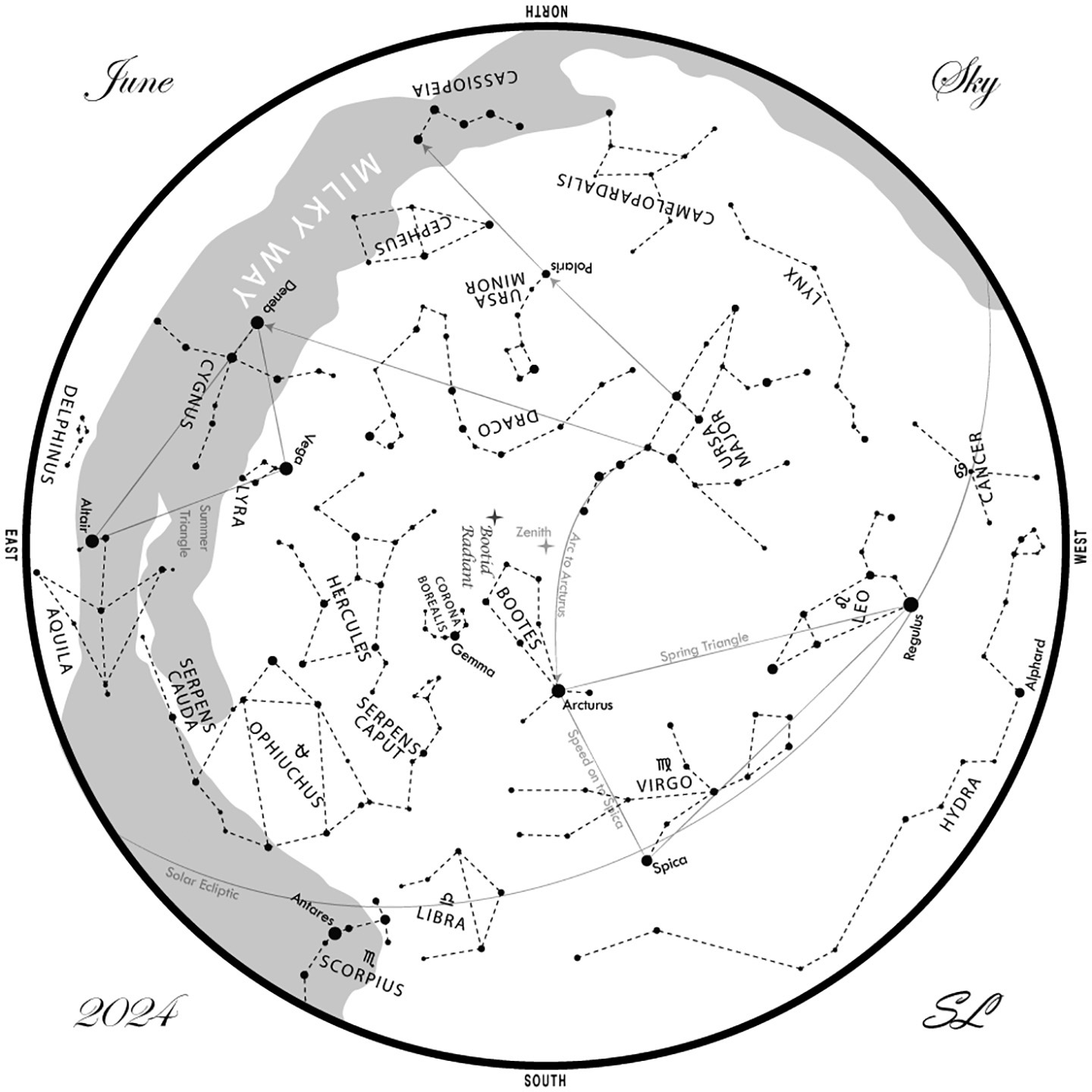The month of June is named for Juno, the Roman goddess who was the wife of Zeus and the queen of the gods. According to myth, Juno has the power to see through a veil of clouds that Zeus put up, so our latest mission to Jupiter was named Juno, since it does much the same thing for us today, just using scientific instruments and not magical powers. June always marks the beginning of summer for us in the northern hemisphere.
This year, that will happen at exactly 4:51 p.m. on June 20.

The word solstice means “sun stands still.” It always marks the longest day and the shortest night of the year as the sun reaches its highest point in our sky. That is about 68 degrees high in Gemini for us here at this latitude of about 43 degrees north.
Our landscape on Earth is lush and green again and the stars above have rotated into their summer positions as Scorpius and Sagittarius are visible again low in the southeastern sky, along with the center of our home galaxy, the Milky Way, located a mere 30,000 light years beyond this area of our sky just below Scorpius and Sagittarius. The nights are getting warmer but also shorter. The Summer Triangle has reclaimed its place soon after dark, nicely framing this arm of the Milky Way galaxy seemingly rising out of the teapot in Sagittarius like steam.
This part of our galaxy is far more substantial than steam; it is composed of 100 billion stars all orbiting around the center of our galaxy at nearly 500,000 miles per hour, along with our own .
















